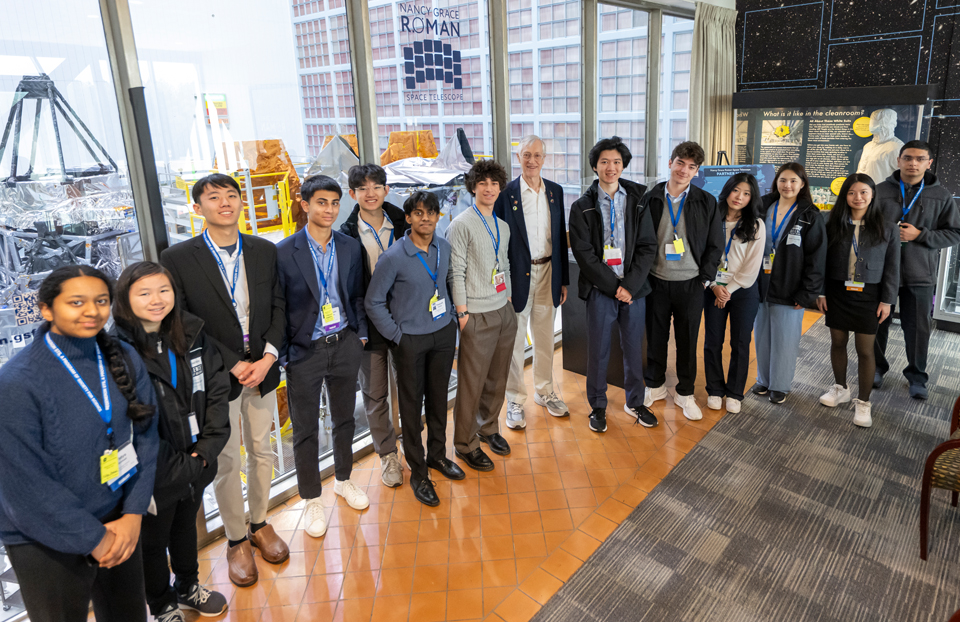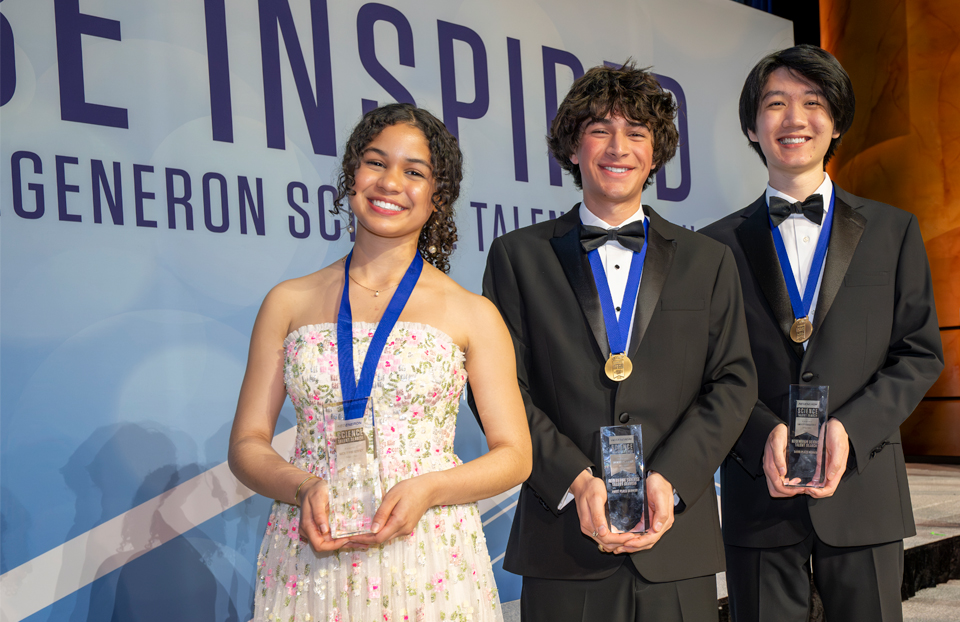Young scientists fight invasive weeds, build a smarter microwave, and more
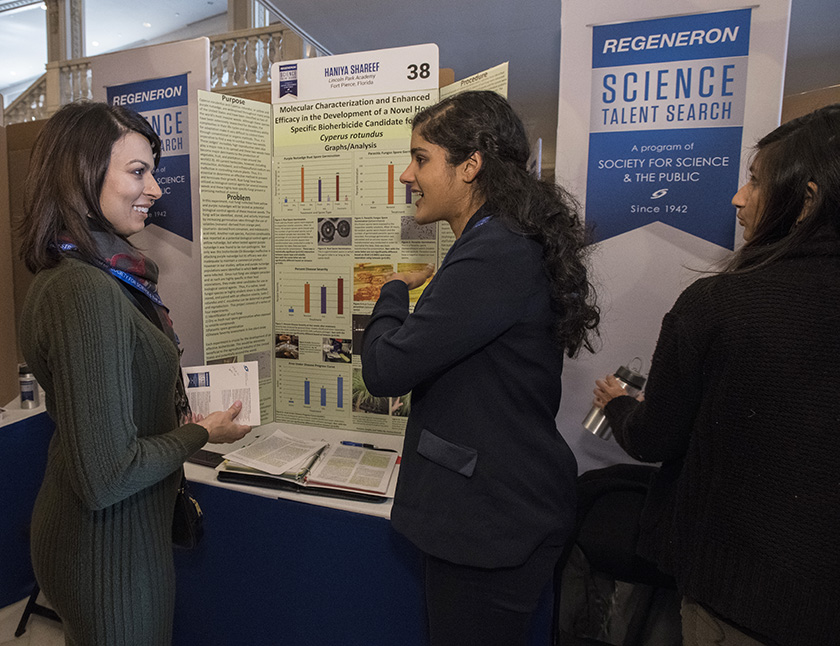
What if you could fight invasive weeds using biological tools? That’s exactly what Haniya Shareef, from Port St. Lucie, Florida, explored in her project. She used biological controls to combat purple nutsedge, which is among the most noxious weeds in temperate and tropical zones worldwide, according to University of California Agriculture & Natural Resources.
“Purple nutsedge impacts agricultural industries around the world,” Haniya explained. “It impacts our food security for the future.”
Haniya used rust, fungi, to control the weed. Volatiles increased the efficacy of the solution. She hopes farmers and those involved in agriculture can use her method, which works better than some current bioherbicides.
Patience is important when conducting scientific research, explained Haniya, who is one of the 40 finalists of the Regeneron Science Talent Search 2018. “We often forget that scientists go through so much to produce a result, it’s not overnight,” she said.
Forty young scientists were selected to travel to Washington, D.C. to showcase their scientific research to judges and the public during Regeneron STS.
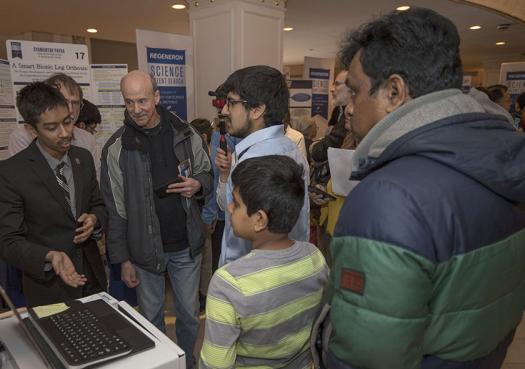
For his project, Muhammad “Shahir” Rahman, from Portland, Oregon, updated something we use almost every day. He built a prototype of an intelligent microwave oven with the ability to determine the type of food you place inside of it, more efficiently heating up food.
Shahir was inspired partly because his dad heats up tea every night in their microwave, but it always ends up boiling over. He wondered why the world had smartphones and self-driving cars, but not a smart-microwave. The prototype is a bit clunky — while using it, Shahir has to set up his computer and run the programs — but he’s improving it and applied for a utility patent for the design.
His interest in engineering stemmed from putting together Legos as a kid. “Tinkering with Legos made me think in terms of an engineer,” he said. Shahir also created a smart bangle people can wear which will detect carbon monoxide. Those in rural or impoverished areas often cook with unattended gas or don’t have safety features to alert them to the toxic gas, so the bangle would alert them.
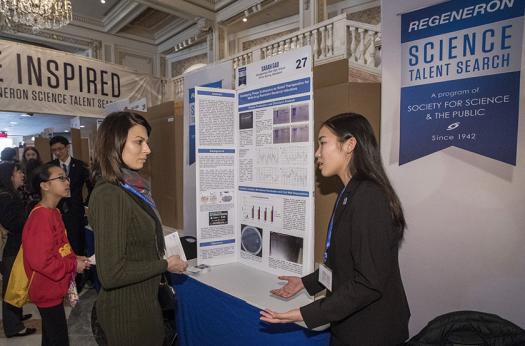
Sarah Gao, from Silver Spring, Maryland, identified enzymes that appear to kill a gram-negative, antibiotic-resistant bacterium. She discovered new viruses called bacteriophages (viruses that infect bacteria) that can invade and kill bacteria, including pneumonia, bronchitis, and meningitis. Antibiotic-resistant bacteria are a major problem, accounting for 10 percent of all hospital-acquired infections.
Previously, researchers had isolated enzymes from bacteriophages that could destroy drug-resistant gram-positive bacteria, but were unable to penetrate the outer membranes of gram-negative bacteria. Sarah purified four enzymes from bacteriophages and showed that they could rupture the bacteria’s outer membrane, even without the use of agents to make it permeable. Think of infiltrating cell membranes, setting off a small bomb inside, and being able to work directly inside the cell, Sarah explained.
Her work may contribute to improved therapeutics for antibiotic-resistant gram-negative bacterial infections.
In fifth grade, Sarah developed a MRSA infection on her arm. She took sulpha drugs which could cure the infection, but it turned out she was allergic to the drugs, like a lot of people. This inspired her to study this antibiotic-resistant bacterium.
She encourages students to sign up for opportunities like Mad Scientist workshops when they’re young. “Don’t be afraid to be as ambitious as you can,” she said.
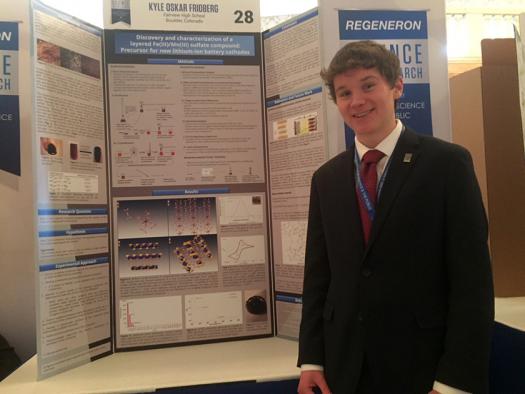
Kyle Fridberg, from Boulder, Colorado, was riding his bike one day and spotted a weird looking vein in a rock. He took a sample home to his garage lab, dissolved it in sulfuric acid, and ended up discovering a new compound — hydrogen ferric manganic sulfate (HFMS). The compound’s composition and layered crystal structure shows promise for improving safer and more cost-effective rechargeable batteries or as a water-oxidation catalyst.
The find led to a year-long effort to identify the red/purple compound he’d produced. Kyle developed a specialized purification and crystallization procedures, which allowed him to identify HFMS as a new substance. People often told him his efforts weren’t going to work and he should just drop it. But “I wanted to see what mineral it was,” Kyle said. “During chemically analyzing it, I discovered a really unexpected reaction.”
Kyle also developed an easily reproducible method to synthesize HFMS, a metal sulphate, using a microwave oven.
The YouTube channel “NurdRage” inspired Kyle to build his own garage lab and get more into chemistry.
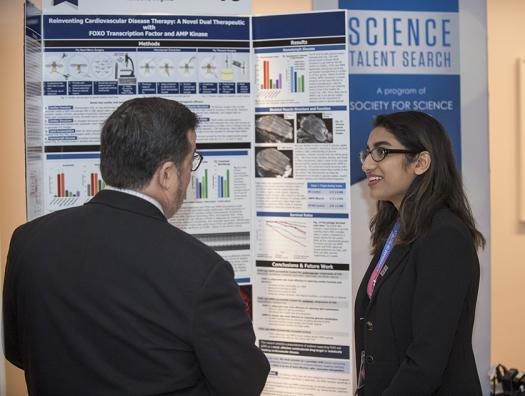
Marissa Sumathipala, from Ashburn, Virginia, is a fruit fly heart surgeon. She dissects fruit fly hearts and performs tissue imaging analysis to better understand how cardiovascular disease ravages the structures within, and see how her therapy works.
Marissa developed a novel dual therapeutic for cardiovascular disease. It uses two different proteins, FOXO and AMPK, to simultaneously treat all the components of cardiovascular disease, including diabetes, high blood cholesterol, high blood pressure, cardio hypertrophy, and arrhythmias. One protein, FOXO, dramatically reduced cardiac dysfunction and hypertrophic heart failure. While AMPK reduced glycemic levels. Together, they resulted in an increase in fruit fly survival, from 50 to 100 percent.
“Fruit fly and human hearts are surprisingly similar,” Marissa said. “They have a lot of morphological and physiological similarities.” On a cellular and molecular level, there are comparable protein expressions and interactions.
Her advice for other young scientists? “Be observant of the natural world. Ask why and how things happen. And never think you’re too young to pursue what you’re passionate about.”
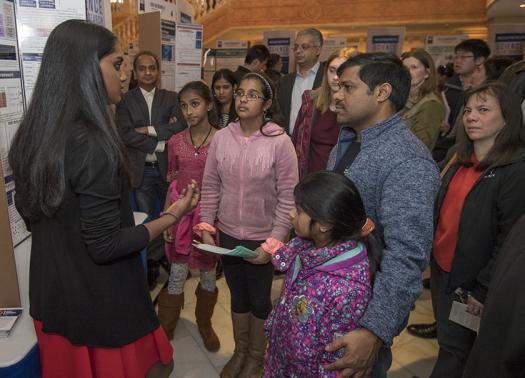
Kavya Kopparapu, of Herndon, Virginia, developed a deep learning tool that extracts molecular and genetic information from a tumor to help patients get the most targeted cancer treatment. Her patented assessment platform, GlioVision, works in patients with glioblastoma, the most common form of adult brain cancer.
The typical post-diagnostic treatment pipeline lasts over two weeks for this highly aggressive cancer. So Kavya integrated cell biology and image processing in a data-driven system of neural networks that extras relevant tumor information from scanned images of cell biopsies. GlioVision identifies tumor features, molecular subtypes, and expression status of genes with high degrees of accuracy, in five seconds. This could potentially expedite a patient’s treatment decisions.
“This is a very simple idea, getting information from images,” Kavya said. “But nobody had tried it yet.”
According to Kavya, the greatest thing about being a young person is science is we haven’t failed yet. “We have this outlook that makes anything possible.”
